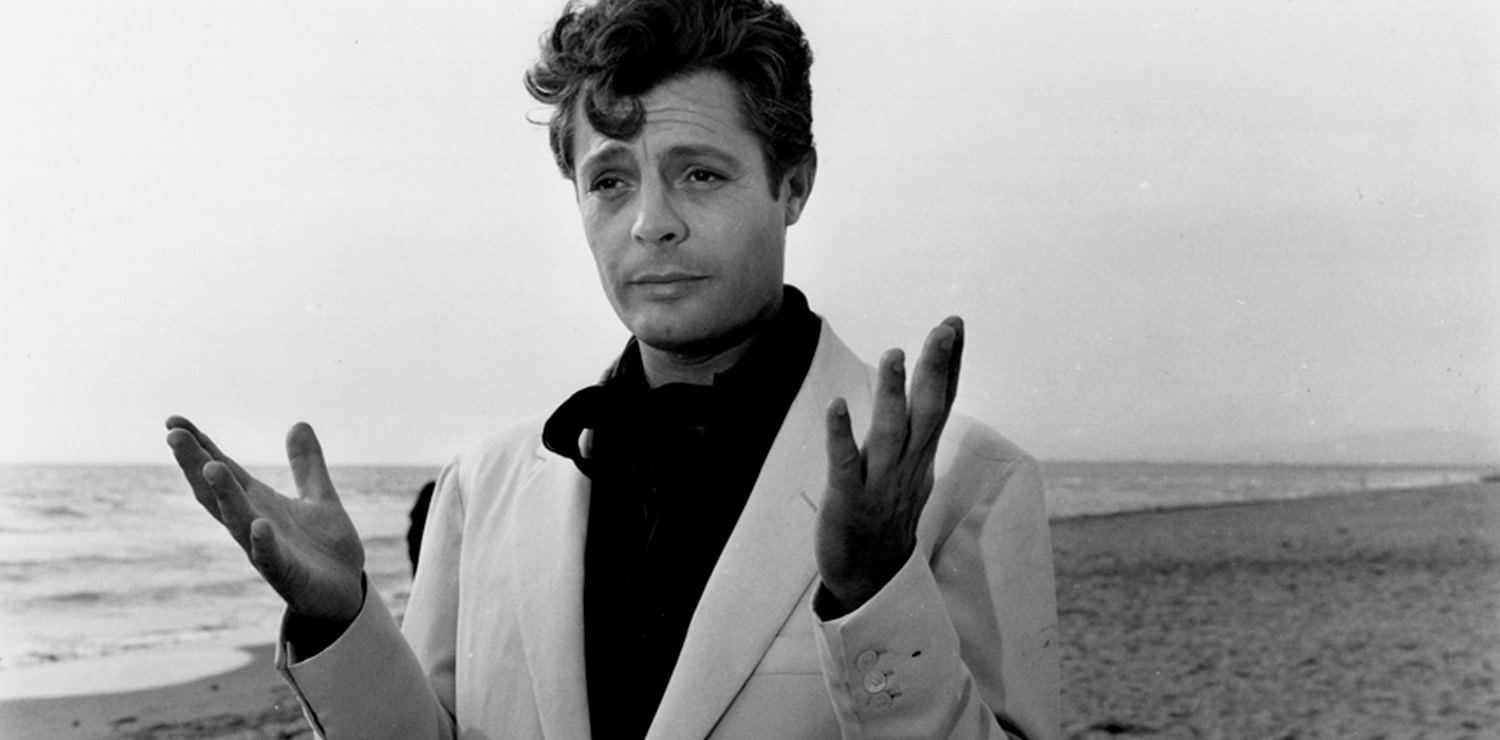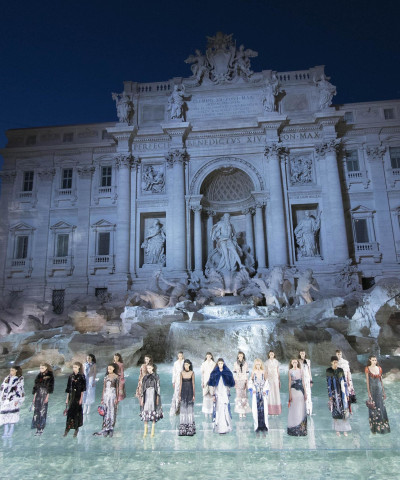Marcello Mastroianni, the Italian film industry’s anti-hero
From the beginnings with Riccardo Freda in 1948 to the collaboration with Federico Fellini, a great exhibition to celebrate a legend
Adored by paparazzi yet extremely shy, despite his indomitable nature as a ladies’ man, Marcello Mastroianni considered his to be a “an in-between life” poised with gentle levity between one success and another. 22 years after his death on 19 December 1996 in Paris, the impressive career of this actor from Ciocaria (170 films, countless theatre perfomances, an infinite variety of characters) closely intertwined with his private life is celebrated by an important exhibition held at the Ara Pacis and running until 17 February. For the first time ever, the artistic career of the protagonist of La Dolce Vita is being presented in its entirety thanks to a wealth of material, much of it heretofore unpublished, comprising a rare photographic apparatus which portrays the actor in a way we are not accustomed to remembering him, on the stage alongside the other great names that have made Italian theatre history, from Vittorio Gassman to Rina Morelli, from Paolo Stoppa to Eleonora Rossi Drago.
From his early days alongside Riccardo Freda in 1948 to his work with Federico Fellini, which led him to become the film director’s authentic alter ego. More than one hundred films between the forties and the late nineties, and numerous International accolades including 3 Academy nominations for Best Actor, 2 Golden Globe awards, 8 David di Donatello awards and the Career Golden Lion at the Venice Film Festival of 1990.
To learn all there is to know about Marcello, as curator Gian Luca Farinelli suggests, we have to follow his filmography since it reflects his own life. And this is exactly how the exhibition is set out, starting from the distinctive trait of his personality: the humility which made him so dear to other actors.
HIS CHILDHOOD AND EARLY DAYS AT CINECITTA’
The exhibition describes his childhood in Ciociaria and his humble origins. Until the time he arrived at Cinecittà, thanks to some relatives who used to run a trattoria there. The early appearances as an “extra” up to his first important role in which he was dubbed by Alberto Sordi, that of the traffic policeman in Sunday in August directed by Luciano Emmer in 1950.
SEX SYMBOL… DESPITE HIMSELF
After also retracing Mastroianni’s theatrical career, the exhibition at the Ara Pacis goes on to address the year in which he was consecrated as a sex symbol. A sex symbol despite himself… It was 1960. The year of La dolce vita. The year after Bell’Antonio by Mauro Bolognini: a husband who is extremely good looking, Sicilian and impotent.
MARCELLO AND SOPHIA
Here the exhibition reaches one of its highlights. The Loren-Mastroianni duo Hollywood is crazy about. Their very first encounter in 1954 on the set of Too Bad She’s Bad by Alessandro Blasetti sparked an entente destined to become a legend with the striptease scene in Scola’s film Yesterday, today, tomorrow (1963) and the year after with Marriage Italian-style (1964, Academy Award nomination for best foreign film).
THE JOURNEY WITH FEDERICO
Neither could the exhibition fail to mention the other eternal partnership between “Marcello” (a name that rings with the pronunciation of Anita Ekberg as she stands in the icy waters of the Trevi Fountain) and Federico Fellini, played out between La dolce vita and La città delle donne, through 8 and a half, the film in which the two of them hide behind each other, ending with Mastorna which was never destined to see the light.










